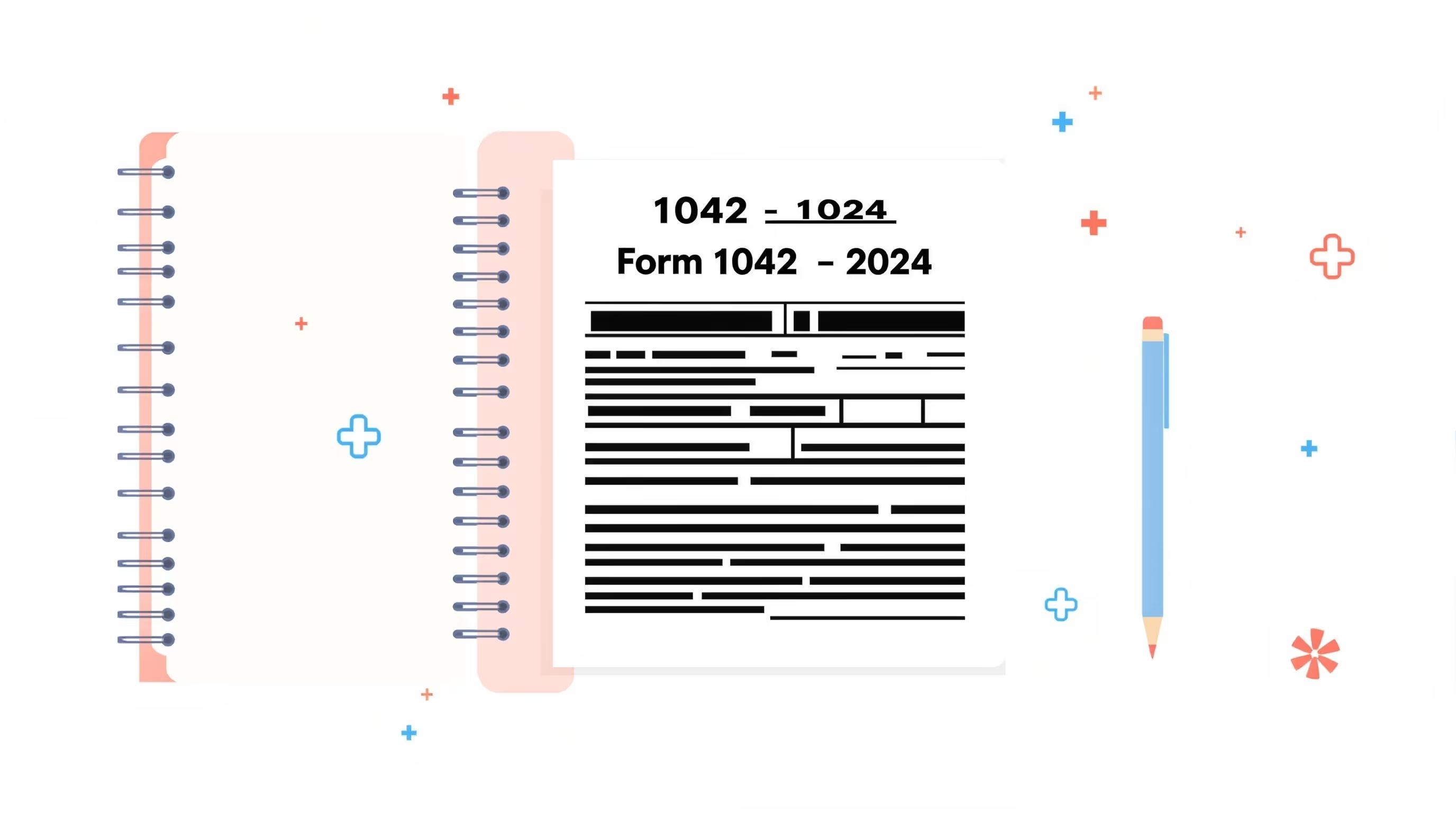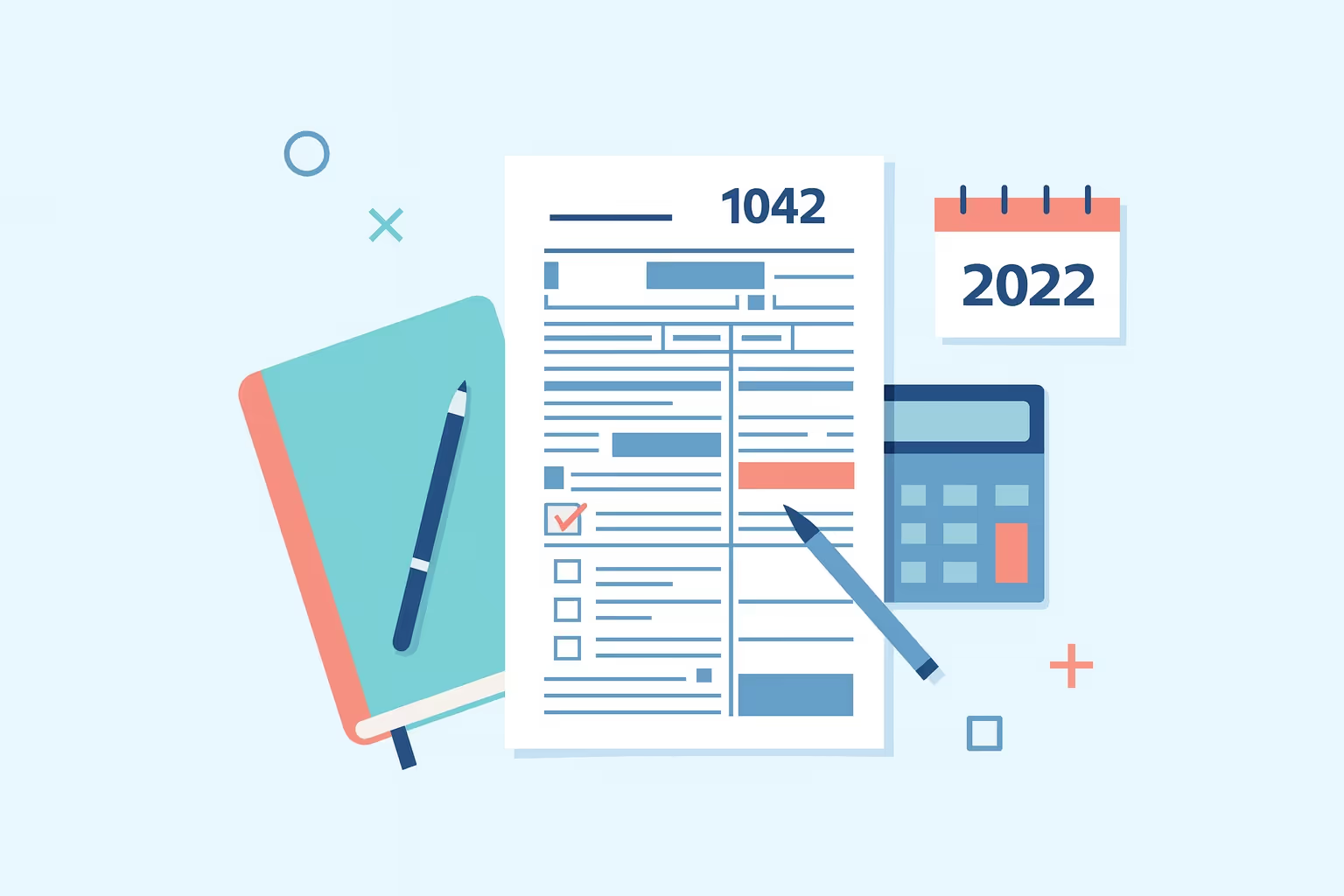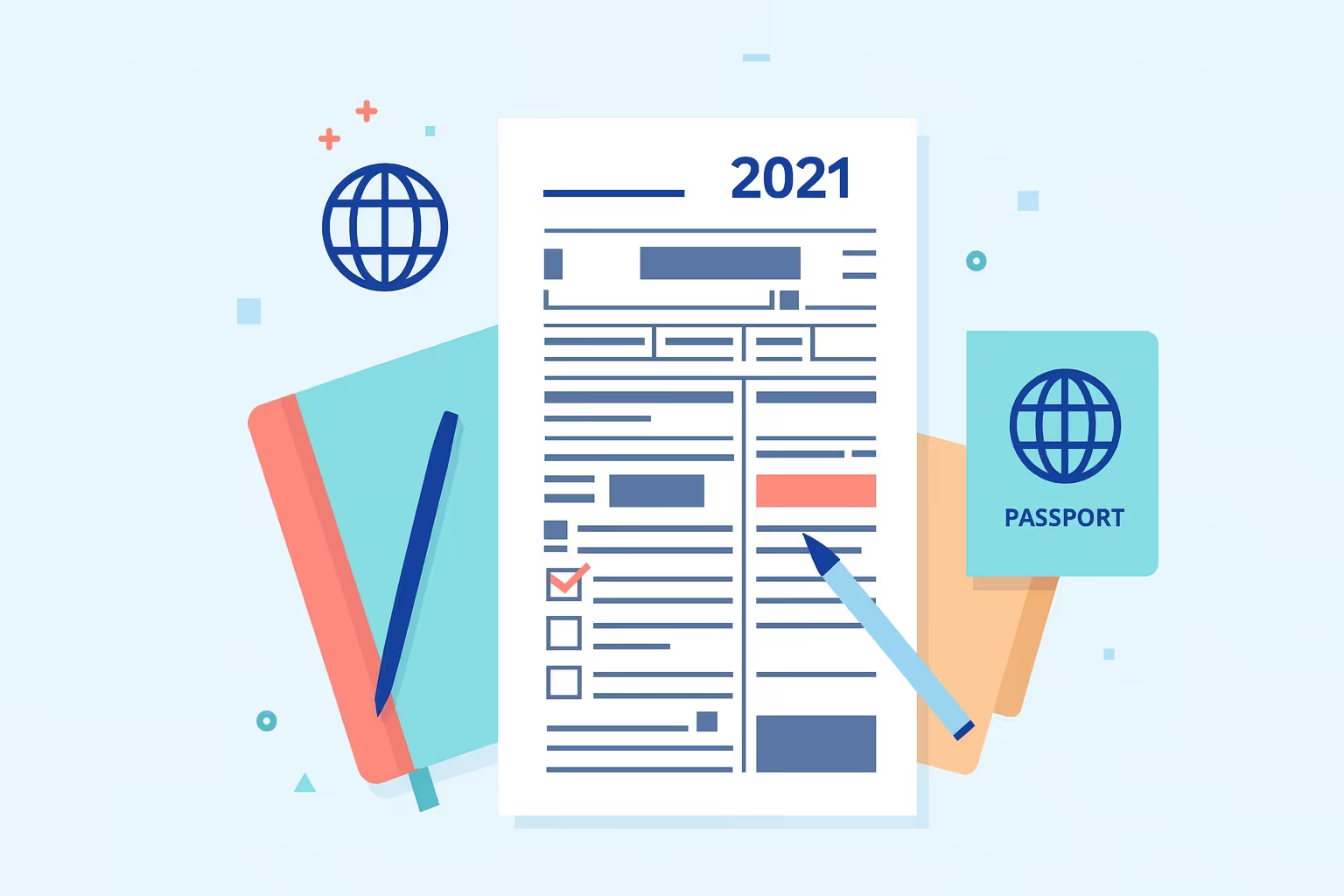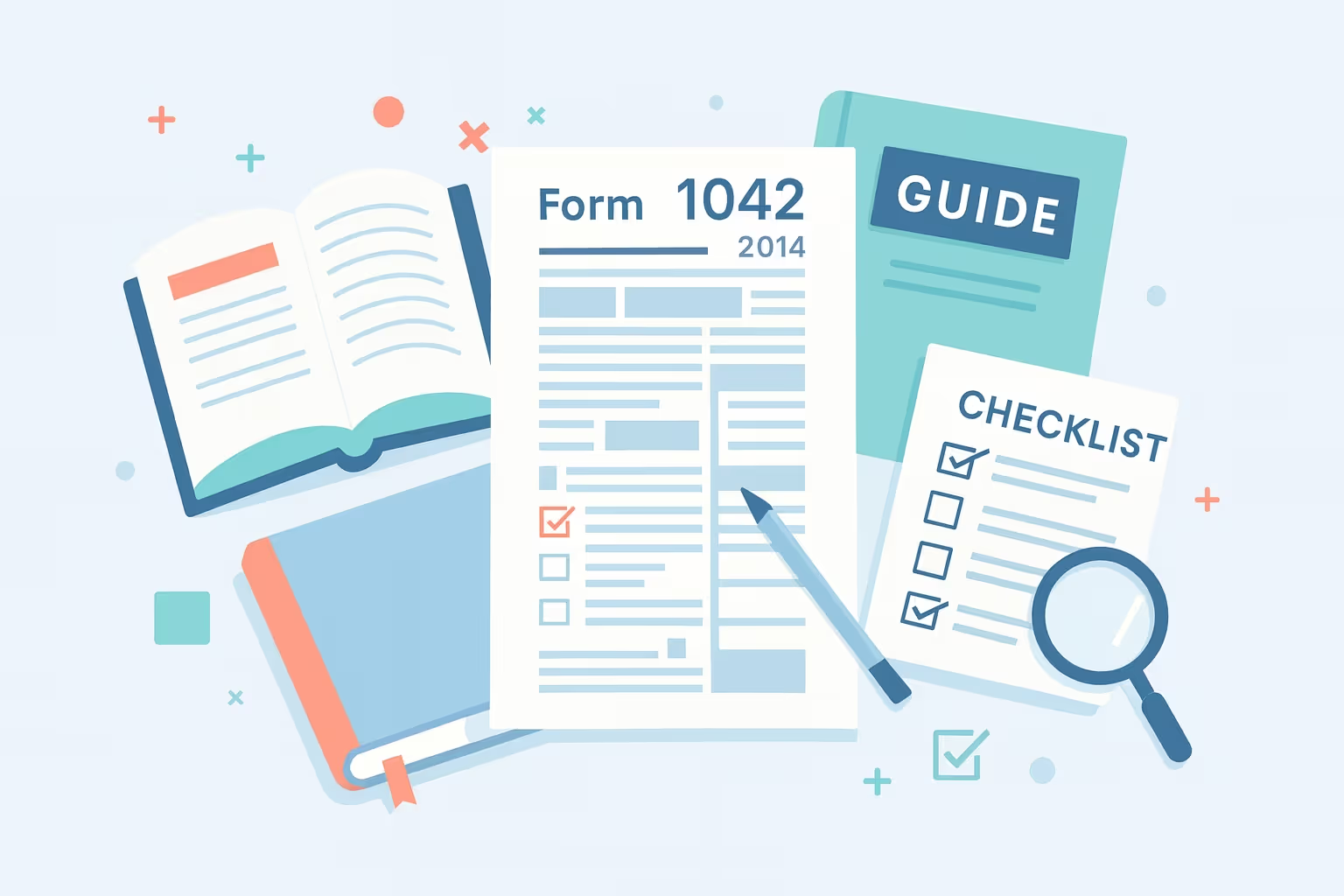Form 1042 2024 Instructions: Guide for Withholding Agents

Form 1042, officially titled the Annual Withholding Tax Return for U.S. Source Income of Foreign Persons, is an IRS form used to report tax withheld on certain payments made to nonresident aliens, foreign corporations, and other foreign persons. It is a summary return for all income subject to withholding under U.S. tax law. Withholding agents—including U.S. and foreign financial institutions, partnerships, and corporations—must file this form each year to report the total income paid, the amount of tax withheld, and any tax liability due.
For the 2024 tax year, the IRS has introduced several key updates that affect how withholding agents file and report. Most notably, foreign withholding agents are temporarily exempt from mandatory electronic filing under Notice 2024-26. In addition, the long-standing credit forward framework is being phased out, and the Qualified Derivatives Dealer (QDD) transition relief has been extended through 2026. These updates simplify compliance for some filers while requiring others to update procedures before the next filing season.
This guide provides clear, step-by-step instructions for Form 1042 2024 to help withholding agents comply with federal tax rules. It explains who must file, how to complete and reconcile required sections, and how to make timely deposits through EFTPS. Whether you are a first-time filer or managing multiple accounts across foreign entities, this article will help you file accurately, report tax appropriately withheld, and confidently meet every IRS deadline.
Understanding IRS Form 1042
Form 1042 is the annual withholding tax return that reports tax withheld on U.S. source income paid to foreign persons, such as nonresident aliens and foreign corporations. It summarizes withholding activity under Chapters 3 and 4 of the Internal Revenue Code, ensuring the IRS receives accurate payment details, federal tax liability, and total tax paid for the year.
What Form 1042 Reports
The form consolidates information from individual Forms 1042-S, which list income and withholding for each payee. Form 1042 is the yearly summary, while Form 1042-S provides the detailed breakdown. Both must reconcile to confirm consistent gross income totals and net tax liability.
Key reporting categories include:
- Income subject to withholding: Interest, dividends, royalties, rents, pensions, and similar income types paid to foreign persons.
- Tax withheld and paid: The amount of U.S. income tax withheld and deposited through the Electronic Federal Tax Payment System (EFTPS).
- Liabilities and adjustments: Any underpayment, overwithheld tax repaid, or credits claimed within the same tax year.
- Filing details: Employer identification number (EIN), designated withholding agent, and reporting of any effectively connected taxable income.
Who Must File
A withholding agent is any individual, corporation, partnership, trust, or financial institution that has control, custody, or payment responsibility for U.S. source income paid to a foreign person. Filing is required even if no tax was withheld, as long as reportable payments occurred.
You must file Form 1042 if you:
- Paid or credited income to foreign persons subject to U.S. withholding.
- Filed or were required to file Form 1042-S during the year.
- Managed specified federal procurement payments, eligible deferred compensation items, or other amounts subject to withholding under Sections 1441–1464.
- Acted as a Qualified Intermediary (QI), Withholding Partnership (WP), or Withholding Trust (WT) responsible for collecting and reporting federal tax.
What Income Types Are Covered
Form 1042 distinguishes between income types under two major IRS chapters:
- Chapter 3 Withholding (Sections 1441–1443): Covers payments such as interest, dividends, rents, royalties, pensions, and scholarship or fellowship grants. These payments are typically taxed at 30%, unless reduced by a tax treaty.
- Chapter 4 Withholding (FATCA, Sections 1471–1474): Applies to payments made to foreign financial institutions (FFIs) or certain non-financial foreign entities that fail to meet FATCA compliance requirements.
Form 1042 includes special categories such as excise tax on certain federal procurement payments, payments under a central withholding agreement, and substitute dividend payments. Each category requires accurate identification using the proper income code and tax rate as listed in the IRS instructions for Form 1042.
What’s New for Tax Year 2024
The IRS introduced several key updates that affect how withholding agents file Form 1042 and report tax withheld on U.S. source income paid to foreign persons. These changes impact both U.S. and foreign filers for the 2024 tax year.
- E-Filing Exemption for Foreign Agents: Under IRS Notice 2024-26, foreign withholding agents—including qualified intermediaries (QIs), withholding partnerships (WPs), and foreign financial institutions (FFIs)—are temporarily exempt from mandatory electronic filing for 2024 returns filed in 2025. No waiver is required. U.S. agents must still e-file their federal tax returns and related forms.
- Credit Forward Framework Ends: The credit forward method under Notice 2010-46 will end after December 31, 2024. Agents who used this option before September 11, 2024, may continue through year-end. After that, they must follow standard refund or adjustment procedures to reconcile federal tax liability and any overwithheld tax repaid.
- QDD Transition Relief Extended: IRS Notice 2024-44 extends Qualified Derivatives Dealer (QDD) relief through December 31, 2026, giving financial institutions more time to meet section 871(m) rules for substitute dividend payments.
These updates require withholding agents to review filing processes and prepare for mandatory e-filing in 2025.
Key Dates and Filing Deadlines
Meeting the proper filing deadlines for Form 1042 helps withholding agents avoid penalties and maintain tax compliance with the IRS. Below are the most important dates and forms for the 2024 tax year.
- Form 1042 Filing Deadline: The annual withholding tax return is due March 17, 2025, whether filed electronically or on paper. The next business day applies if the due date falls on a legal holiday or weekend.
- Form 1042-S Deadline: Information returns for payments made to foreign persons are due March 15, 2025. These forms must align with the totals reported on Form 1042.
- Extension Option – Form 7004: Withholding agents can request an automatic six-month extension using Form 7004, moving the filing deadline to September 15, 2025. However, extensions apply only to filing—not to paying taxes due.
- Deposit and Payment Deadlines: Tax deposits must follow quarter-monthly periods based on total federal tax liability lines. For example, if your liability exceeds $2,000 within a period, payment is due within three business days.
Timely filing and deposits ensure accuracy, prevent interest charges, and keep your federal tax return in good standing.
Step-by-Step Guide to Completing Form 1042
Follow these steps to complete Form 1042 accurately for the 2024 tax year. This guide helps withholding agents report tax withheld, reconcile liabilities, and confirm compliance before filing.
Step 1 – Gather Documents
- Collect all Forms 1042-S you issued or were required to issue.
- Maintain valid Forms W-8 and supporting treaty documentation for foreign payees.
- Retain EFTPS deposit confirmations and payment records.
- Review your prior year’s Form 1042 to track carryovers or adjustments.
- Have your Employer Identification Number (EIN) ready, or use a specialized EIN such as QI-EIN, WP-EIN, or WT-EIN if applicable.
Step 2 – Identify Your Status
- Determine whether you act as a U.S. or foreign withholding agent responsible for U.S. source income.
- Apply Chapter 3 rules for payments to foreign persons (e.g., interest, dividends, royalties).
- Apply Chapter 4 (FATCA) rules for payments to foreign financial institutions or noncompliant entities.
- Maintain separate records for each chapter if both apply to your payments, ensuring accurate reporting.
Step 3 – Complete the Header
- Enter your legal business name and mailing address as listed on IRS records.
- If you operate outside the U.S., include your foreign postal code.
- Provide the correct EIN (or QI-EIN, WP-EIN, or WT-EIN).
- Include both Chapter 3 and Chapter 4 status codes so the IRS can correctly classify your filing.
Step 4 – Report Federal Tax Liability (Lines 1–60)
- Record tax liability by quarter-monthly periods (1–7, 8–15, 16–22, and 23–end of month).
- Enter only the liability amounts; do not report deposits here.
- Never enter negative amounts in this section; adjustments go into summary lines.
- Maintain a detailed schedule so that monthly totals reconcile to the annual summary lines.
Step 5 – Complete Summary Lines (61–71)
- Report all income, tax withheld, and deposits.
- Ensure Lines 62a–62d gross income totals match sums from Forms 1042-S.
- Confirm that the tax withheld on Lines 63a–63e matches information returns.
- Calculate net liability on Lines 64a–64e, including any overwithheld tax repaid.
- Summarize deposits, credits, or prior-year adjustments in Lines 65–70.
- Line 71 reflects whether there is a balance due or overpayment.
Step 6 – Review Schedules and Attachments
- Prepare Schedule Q if you acted as a Qualified Derivatives Dealer (QDD).
- Attach explanations for adjustments, multiple roles, or material changes.
- Keep proof of any extension request filed using Form 7004.
- If filing electronically, do not attach Forms 1042-S.
Final Review Before Submission
- Make sure totals on Lines 1–60 match summary figures.
- Confirm that Chapter 3 and Chapter 4 amounts remain correct and separate.
- Verify that all deposits were made via EFTPS following IRS timing rules.
- File electronically if required, or mail your paper version to the IRS address.
- If you want additional guidance, refer to the official IRS page about Form 1042.
For complete and current details on filing, payments, and instructions, visit the About Form 1042 page.
How to File Form 1042
Filing Form 1042 accurately ensures compliance for withholding agents reporting federal tax withheld, payments, and adjustments on U.S. source income paid to foreign persons, whether e-filing or paper filing.
Electronic Filing
- Most withholding agents must file Form 1042 electronically using an IRS-approved e-file provider.
- Electronic filing helps reduce processing time and lowers the risk of unpaid tax or rejected returns.
- Each filer must register and submit forms using a valid taxpayer identification number (TIN) or foreign tax identification number.
- The IRS requires e-filing for most entities, including foreign partnerships, withholding foreign partnerships, and qualified investment entities.
- If permitted, agents who qualify for an exemption—typically small or foreign organizations facing technical limitations—may submit paper forms.
Paper Filing
- Withholding agents who qualify for paper submission must mail a separate form to the IRS address listed in the current instructions.
- Each package should include supporting schedules, payment summaries, and reconciliation documents.
- Information reported on the paper form must match electronic deposit records to avoid discrepancies.
- If state income tax withheld differs from federal figures, explain briefly.
- Keep proof of mailing or delivery confirmation to document compliance.
Extensions and Corrections
If you cannot file on time, request an automatic extension using Form 7004 before the deadline. The extension covers filing only—not payment. You must still pay federal tax withheld and state income tax by the due date to avoid penalties and interest. If errors occur after submission, file an amended return using the same TIN or foreign tax identification number.
Key Filing Considerations
- Report effectively connected income separately from fixed or determinable annual or periodical (FDAP) income.
- Use your funds to cover any shortfall if deposits do not match reported liabilities.
- Verify net income and tax treaty benefits before final submission to ensure proper withholding rates.
- Maintain consistent reporting for all foreign partnerships and entities with shared income sources.
Following these steps ensures your income tax returns remain accurate and compliant with IRS rules while protecting your withholding status for future filings.
Making Payments and Deposits
Timely and accurate deposits are essential for maintaining compliance when filing Form 1042. Each primary withholding agent must ensure the deposits align with reported liabilities and all amounts paid to foreign recipients. Payments should be made electronically unless an alternate method is required.
Using EFTPS
- Enrollment and Setup: Register for the Electronic Federal Tax Payment System (EFTPS) before making your first payment. Early enrollment ensures your account is active and ready for use when deposits are due.
- Making Payments: Log in to EFTPS, select the appropriate income code box, and enter the correct payment type for the period. Use the same reporting structure shown on your return.
- Deposit Timing: Payments are due within three business days whenever the total liability in a quarter-monthly period exceeds $2,000.
- Verification: Save or print the confirmation to document compliance after payment submission. Each deposit must reflect actual amounts paid and match the liabilities reported on the form.
- Use of Own Funds: When errors or shortfalls occur, agents must cover the difference using their funds to prevent penalties.
Same-Day Wire Option
- When to Use: This option applies when EFTPS deadlines are missed or system delays occur.
- How to Submit: Contact your bank or territory financial institution early on the payment date to confirm processing cut-off times.
- Details: Provide your Employer Identification Number (EIN), tax period, and payment type to ensure the deposit is accurately credited to your account.
Common Deposit Mistakes
- Misreporting Liabilities: Reporting deposits instead of liabilities can cause IRS reconciliation issues, particularly for withholding foreign trusts and other complex entities.
- Missed or Late Deposits: Missing payments or failing to deposit within the required window can result in penalties and interest on the foreign partner’s share of income.
- Incorrect Income Codes: Always verify that entries match the correct income code box and that source substitute dividend payments are reported under the proper category.
By maintaining accurate deposit records and reviewing every transaction for completeness, withholding agents can ensure compliance and support accurate year-end reporting.
Coordinating Forms 1042 and 1042-S
Form 1042 provides a yearly summary of total withholding activity, while Form 1042-S reports payment details for each beneficial owner. They ensure all U.S. source income, tax withheld, and treaty-based exemptions are accurately documented and reconciled. Proper coordination reduces errors and helps maintain full compliance with IRS requirements.
- Reporting Relationship: Form 1042 summarizes total U.S. source income, and each Form 1042-S lists individual recipient details such as income type, tax rate, and withholding amount.
- Beneficial Owner Identification: To support accurate reporting, every Form 1042-S must include payee information, such as residency, claim of treaty benefits, and the correct withholding rate.
- Missing Documentation: If a foreign payee fails to submit a valid Form W-8, the payment must still be reported using the correct income code and subject to the highest statutory rate.
To ensure accuracy, verify that income, backup withholding, and reported liabilities match across both forms. Review accumulated and current earnings regularly to confirm income classifications and timing. Consistency between Forms 1042 and 1042-S prevents reporting discrepancies and supports smooth IRS reconciliation in future filings.
Chapter 3 vs. Chapter 4 (FATCA) Overview
The U.S. withholding system operates under two key frameworks: Chapter 3 and Chapter 4 (FATCA). Both regulate how U.S.-source income paid to foreign persons is taxed and reported, but each serves a distinct compliance purpose.
Chapter 3 – Traditional Withholding
- Purpose: Focuses on taxing U.S.-source income paid to foreign persons (both individuals and entities).
- Income Covered: Includes interest, dividends, rents, royalties, pensions, and other U.S.-source income subject to withholding.
- Documentation: Requires valid Forms W-8BEN, W-8ECI, or other W-8 series to claim treaty benefits or exemptions.
- Withholding Rate: Standard 30%, which may be reduced or eliminated under an applicable tax treaty.
- Reporting Form: Reported on Form 1042-S by the recipient and summarized on Form 1042.
- Precedence: Applies when FATCA (Chapter 4) does not.
- Who Ensures Compliance: The withholding agent verifies payee documentation and applies the correct rates.
Chapter 4 – FATCA Withholding
- Purpose: Ensures compliance of foreign financial institutions (FFIs) and certain nonfinancial foreign entities under FATCA rules.
- Income Covered: Applies to “withholdable payments” (such as U.S.-source interest and dividends) made to noncompliant FFIs or entities.
- Documentation: Requires FATCA certification and GIIN verification to confirm entity compliance status.
- Withholding Rate: Standard 30% with no treaty reduction for noncompliant entities.
- Reporting Form: Reported on Form 1042-S using FATCA income codes, and summarized on Form 1042.
- Precedence: Takes precedence when both Chapter 3 and Chapter 4 rules apply.
- Who Ensures Compliance: The withholding agent must confirm FATCA registration and apply withholding if the payee fails to comply.
Properly distinguishing between these two chapters ensures accurate reporting, prevents duplicate withholding, and helps maintain full IRS compliance.
Common Filing Errors and Penalties
Even experienced withholding agents can make reporting mistakes that lead to notices, penalties, or processing delays. Understanding the most frequent errors helps you maintain compliance and avoid unnecessary costs.
Frequent Filing Errors
- Incorrect Identification Numbers: Using the wrong employer identification number (EIN) or omitting the taxpayer identification number can cause record mismatches and delay refunds or processing.
- Omitted Status Codes: Every filer must include Chapter 3 and Chapter 4 status codes. Leaving either blank can trigger an IRS inquiry.
- Reconciliation Mistakes: When totals on Form 1042 don’t match those on Forms 1042-S, the IRS may issue discrepancy notices or assess penalties.
- Negative Entries on Liability Lines: Never report negative amounts on Lines 1–60. Adjust overwithholding through Line 64a instead.
- Incomplete Section 2: Even if no FATCA withholding applies, the reconciliation section must be completed to verify all U.S. source payments.
Penalties and Interest
- Late Filing: Failing to file Form 1042 or its attachments on time can result in a penalty of 5% per month, up to 25% of the unpaid tax.
- Failure to Deposit: Missing or late deposits through EFTPS may lead to penalties ranging from 2% to 15% of the withheld amount.
- Incorrect Information Returns: Each Form 1042-S filed with inaccurate or missing data may incur a $310 penalty per form for 2024.
- Interest on Unpaid Balances: Any unpaid tax continues to accrue daily interest until payment is received.
Maintaining accurate, timely, and consistent records between all forms ensures smooth processing and helps prevent penalties from compounding over multiple tax years.
Maintaining Records and Compliance
Keeping accurate documentation is essential for verifying the accuracy of your Form 1042 filings and demonstrating compliance during IRS reviews. Withholding agents should maintain detailed, organized records for each payment and reporting year.
- Record Retention: Keep all supporting documentation, including Forms W-8, payment confirmations, EFTPS deposit receipts, and copies of filed Forms 1042 and 1042-S. The IRS requires these records to be retained for at least four years from the filing date.
- Electronic Storage: Electronic records are acceptable if easily retrievable, legible, and securely stored. Maintain backups to prevent data loss.
- Documentation Accuracy: Verify that all amounts paid, tax withheld, and adjustments match what was reported on the filed return. Any discrepancies between deposits and reported liabilities must be explained and corrected promptly.
- Ongoing Compliance: Stay updated on changes to FATCA rules, tax treaties, and IRS Form 1042 instructions. Regular internal reviews help ensure procedures remain accurate and current.
- Professional Support: When filing complex reports involving multiple entities or chapters, consider consulting a qualified tax professional or using IRS-approved e-filing systems.
Maintaining detailed and accessible records supports compliance and minimizes errors in future filings and IRS examinations.
Frequently Asked Questions (FAQs)
Who must file Form 1042 and report tax withheld?
Any U.S. or foreign withholding agent responsible for paying foreign persons must file Form 1042 annually. The form reports all tax withheld on U.S. source income, including interest, dividends, or royalties. Even if no tax was withheld, you must file if you issued any Forms 1042-S for reportable payments.
How does Form 1042 differ from Form 1042-S for foreign persons?
Form 1042 summarizes the total U.S. source income and tax paid during the year, while Form 1042-S provides detailed payment information for each foreign person. Every payee who received U.S. source income must appear on a corresponding Form 1042-S, ensuring all withholding and reporting obligations are accurately reflected for IRS compliance.
How do I handle state income tax withheld versus federal reporting?
Form 1042 covers only federal tax withheld, not state income tax withheld. Withholding agents should maintain detailed and consistent records for both levels of reporting. Keep copies of payment confirmations, state filings, and reconciliation summaries. Retaining documentation ensures that deposits and payments are correctly matched, avoiding discrepancies between state and federal agencies during audits or compliance reviews.
How can I verify the accuracy of the tax paid and the total net tax liability?
To verify accuracy, compare all EFTPS payments with the totals reported on Lines 61–71 of Form 1042. The total net tax liability must match your total deposits. Conducted monthly reconciliations to ensure every payment was complete, recorded on time, and correctly classified. Identifying errors early prevents underreporting and simplifies year-end adjustments before filing your annual federal return.
What should I do if overwithheld tax was repaid to a payee?
When an overwithheld tax repayment occurs, you must report the correction on Line 64a of Form 1042. Retain proof of repayment, such as transaction records or correspondence confirming reimbursement to the payee. This documentation validates your adjustment with the IRS, ensuring the corrected amount reflects the actual withholding and preventing future discrepancies or duplicate reporting in subsequent filing periods.














